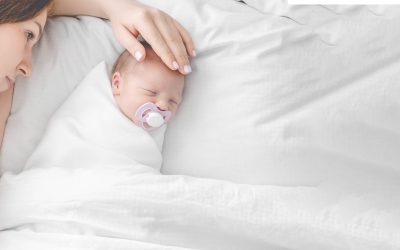How to Find the Safest Car Seats for Your Infant
There are lots of things to buy for a new baby – the most important is a car seat. Walking into a store and going down the car seat aisle can be very overwhelming, there are so many options and different price points.
Here are some things to keep in mind while shopping for your first car seat:
Misuse rates are mind blowing- 9 out of 10 children are NOT safe in the car
Seat that fits your vehicle
Most stores will allow you to try the seat in your vehicle to be sure it installs tightly and can achieve the correct angle. When testing the seat in your vehicle, don’t simply place the seat in and call it ‘good’. Install it and be sure you can achieve an install with less than 1 inch of movement and a 45-degree recline. This recline is very important to protect the airway of a young child.
Seat that fits your baby
Next look for a seat that will fit baby correctly. This is hard to do if you are still pregnant, so we have taken the guesswork out with a list of seats that fit all newborns, even some for low birth weight and preemies. I know what you may be thinking- “Don’t all car seats fit babies?” The answer is that not all car seats are created equal and some can fit certain babies very poorly- and poor fit in a car seat can be catastrophic during a crash. You want the harness straps to be AT or Below the baby’s shoulders, a crotch buckle that is close/right against the baby (a “crotch roll” can fix a gap between baby and buckle), a low weight minimum (4 or 5lbs) and a seat that you feel comfortable using. This seat can be an Infant seat (Bucket seat) or an Infant/Child seat (Convertible). Both are very acceptable seats for newborns, permitted you can achieve the correct angle and the seat will fit the baby well.
Seat that fits your budget
Budget – the nasty “B” word. You will have to buy at least 2 more seats for your child (we will get to those later), so don’t blow the bank on the first one (but hey, if you want to or have the means to, have at it). The most expensive seat is not always the “SAFEST” seat. All car seats are required to pass the testing standards that Transport Canada has laid out in the CMVSS (In the US it is the NHTSA who sets the standards for the FMVSS). Most of the seats that are more expensive are because they have “bells and whistles” ie: premium lower anchors, plush fabrics, larger canopies, extra inserts and no re-thread harnesses. Your child will be just as safe in an $80 seat, as they would a $300 seat. You can take a look at car seat safety ratings and determine which is the safest seat for your budget.
Now that we have a seat that fits the vehicle, baby, and budget, how do we use it??
Misuse rates are mind blowing- 9 out of 10 children are NOT safe in the car, generally because their seat is not installed correctly and/or they are not strapped in properly.
Key points to remember when strapping the baby into the car seat are:
- Straps need to be AT or BELOW the child’s shoulders
- Crotch buckle should be close to baby, and if not, use a wash cloth or receiving blanket (crotch roll) to fill the gap. You want the harness to be “Snug as a hug”, I tell parents to use the “Pinch Test”
- Chest clip needs to be at nipple level.
- If it does not come in the car seat box or from the car seat manufacturer, DO NOT USE IT.
If you’re feeling overwhelmed, its ok.
After market items, such as Bundle Me’s, harness covers, and head huggers have not been tested with your car seat. These items are marketed as “Crash Tested” but unfortunately, there are no crash test standards for such items. There are other, safe ways to keep baby warm, prevent straps from rubbing on necks and supporting the head.
If you’re feeling overwhelmed, it’s ok. This is a lot of information to absorb and it’s regarding the safety of your most precious passenger. A great idea is to make an appointment with a Certified Children’s Restraint Systems Technician to have the install inspected and to learn how to use your seat properly. Be sure the technician you see has an up-to-date certification (most expire after 3 years) and is willing to show you that when asked.










